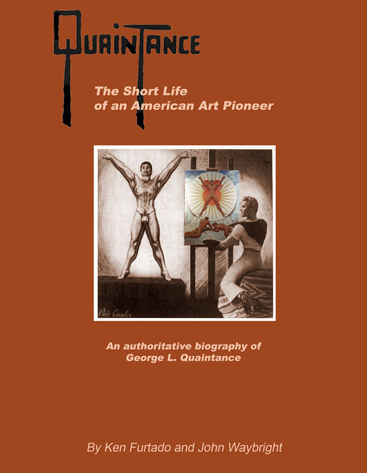- Details
- Written by: Ken Furtado
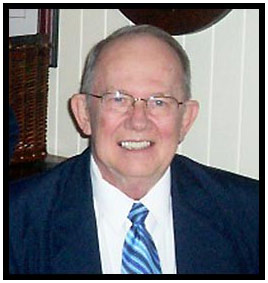 It is with great sadness that I report that my friend, colleague and co-author, John Waybright, has died. His family notified me that he passed away at 12:10 P.M., May 10, 2013. He gave his body to science.
It is with great sadness that I report that my friend, colleague and co-author, John Waybright, has died. His family notified me that he passed away at 12:10 P.M., May 10, 2013. He gave his body to science.
John was a retired weekly newspaper editor. He earned Virginia Press Association awards for columns, editorials and newspaper page designs. He lived in Luray, VA, not far from George Quaintance's birthplace in rural Alma, Va.
In 2002, when I purchased a collection of Quaintance material at an estate sale, I searched the Internet for more information about Quaintance and that search led me to John. An email correspondence ensued, and after determining that there was little authoritative information about Quaintance in print, we decided to collaborate on a definitive biography. We agreed that John would write about the artist’s years on the East Coast and Ken (Furtado) would depict the years Quaintance spent in Los Angeles and Phoenix. Not only was John born near Quaintance's birthplace, he was a personal friend of one of Quaintance's only living relatives, who opened the family archives to him.
- Details
- Written by: Ken Furtado
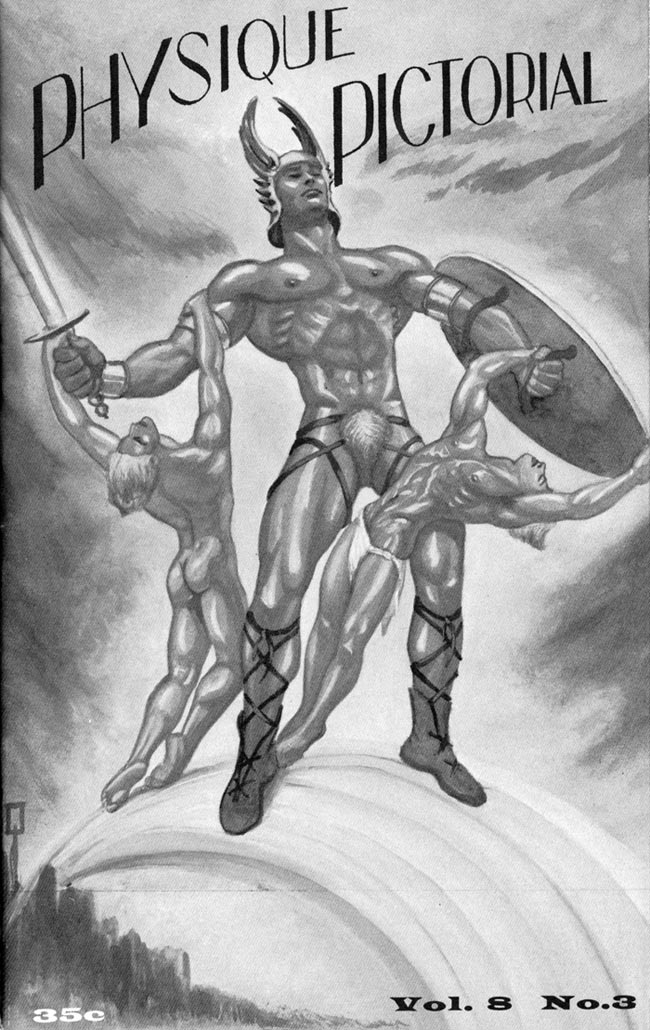 With his health declining, George Quaintance decided to sell the Phoenix property he called Rancho Siesta and move the studio back to LA. One is tempted to wonder whether the more ready availability of doctors and hospitals was a factor.
With his health declining, George Quaintance decided to sell the Phoenix property he called Rancho Siesta and move the studio back to LA. One is tempted to wonder whether the more ready availability of doctors and hospitals was a factor.
The painting Rodeo Victor was the last of his popular cowboy-themed canvases. Then came a pair of canvases with ancient themes, Spartan Soldiers Bathing and Baths of Ancient Rome, whereupon George's interests turned to the gods. In quick succession he painted Vulcan (aka Zeus), Bacchant, Falconer and Hercules.
Norse mythology was next. Quaintance announced in a letter to the publishers of Adonis and Body Beautiful, two pocket-sized color physique magazines for which he contributed several covers, that he had hired one of the most popular models of the day, Dick Dubois (1954 Mr. America and 1957 Mr. USA), to pose for his next painting. Dubois was the golden boy of the day, with his face and physique on countless billboards, advertisements and magazines across the continent. He even toured with Mae West as part of her stage show.
- Details
- Written by: Ken Furtado
 Quaintance was a man who liked to be in a relationship, and he had several illustrious partners, even if their renown was not widespread or did not outlast them. One such lover was Ron Nyman (1924-2000), younger by two decades.
Quaintance was a man who liked to be in a relationship, and he had several illustrious partners, even if their renown was not widespread or did not outlast them. One such lover was Ron Nyman (1924-2000), younger by two decades.
Nyman was also an early business partner. They had stationery and business cards printed with both their names. Then Quaintance decided, as he later wrote to a friend, that Nyman was "a gold digger" ... and he kicked him out. Rather than waste good stationery, Quaintance carefully lined out Nyman's name on the remaining letterhead and business cards, and continued to use them.
Prior to the split, Nyman also modeled for three canvases produced by Quaintance in 1952. He is the manacled muscleman in Sacrifice, the foreground figure in Reverie and the reclining nude in Idyll.
- Details
- Written by: Ken Furtado
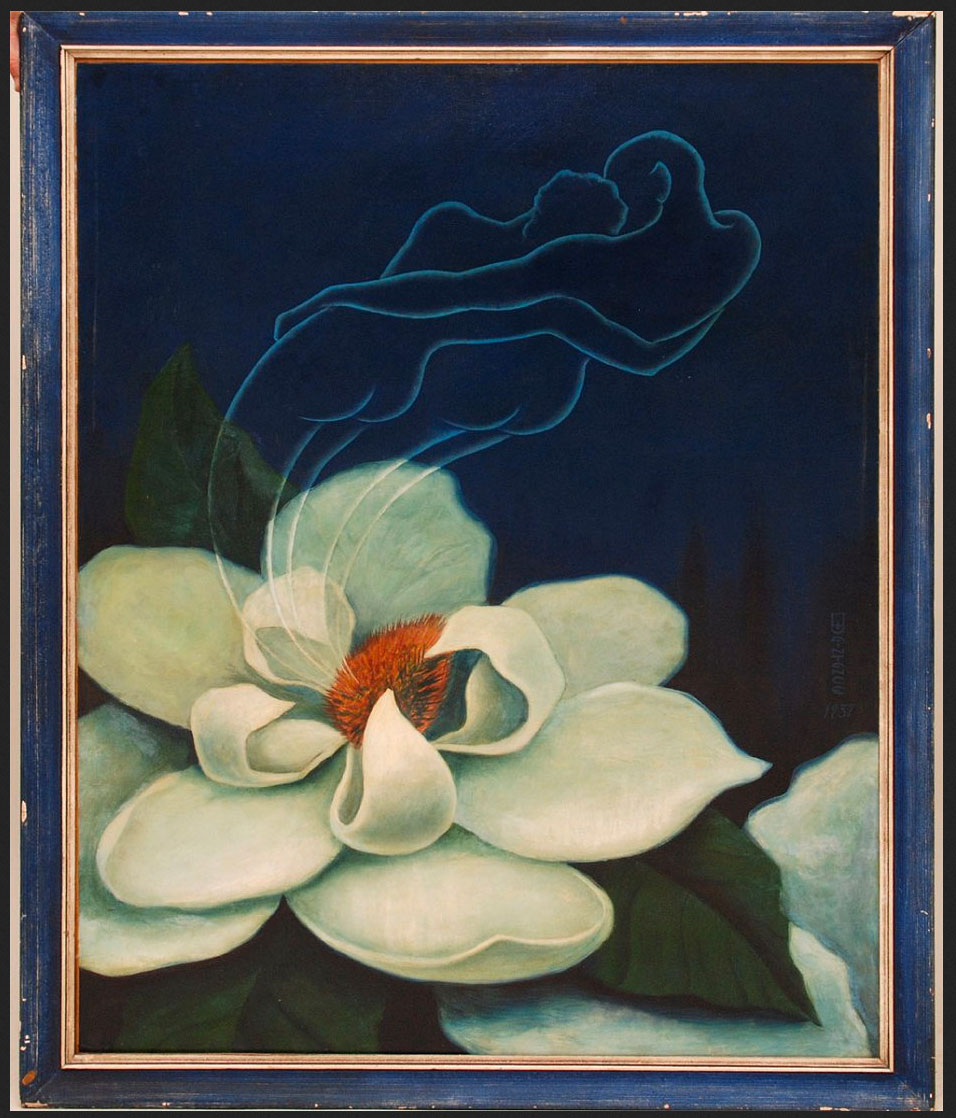 Quaintance fans and followers will be interested to learn that an early canvas has been found and is being auctioned online on Jan. 8, 2013.
Quaintance fans and followers will be interested to learn that an early canvas has been found and is being auctioned online on Jan. 8, 2013.
The untitled painting depicts a water lily on a midnight-blue background, with a ghostly pair of male and female nudes emerging in a swirl from the center of the flower. It's a motif Quaintance has used in other works.
 The dimensions of the canvas are 30x39 inches; the description reads, "The painting was acquired from the artist in 1937, thence by descent to current consignor. It was in the collection of Dr. Annella Brown of Boston, a prominent surgeon and art deco collector. Signed & dated 1937."
The dimensions of the canvas are 30x39 inches; the description reads, "The painting was acquired from the artist in 1937, thence by descent to current consignor. It was in the collection of Dr. Annella Brown of Boston, a prominent surgeon and art deco collector. Signed & dated 1937."
The signature is vertical and appears at the right edge of the canvas at the bottom of the blue area. The date is directly below it..
- Details
- Written by: Ken Furtado
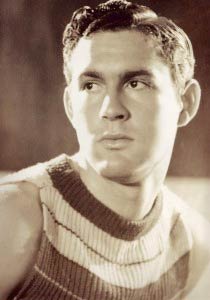 A few years ago, I accepted an invitation from Dennis Bell to visit the Athletic Model Guild. Founded by Bob Mizer in 1945, AMG is the longest continually operating adult male studio in history. It is legendary in so many ways, and it has had such an impact on American erotic culture and counterculture, that Mizer deserves to be on a postage stamp.
A few years ago, I accepted an invitation from Dennis Bell to visit the Athletic Model Guild. Founded by Bob Mizer in 1945, AMG is the longest continually operating adult male studio in history. It is legendary in so many ways, and it has had such an impact on American erotic culture and counterculture, that Mizer deserves to be on a postage stamp.
Mizer himself was an astonishing personality. As a precocious teen, he and his friends would attend parties thrown by older gay men, delighting their hosts by taking off all their clothes. He began keeping a diary at the age of 17, writing in it nearly every day for the remainder of his life. That diary today encompasses many volumes and makes fascinating reading. Written in extra-large lettering on the very first page, it says: "Bob Mizer … The Boy … The Thinker … The …?"
It was as if he were setting the stage for the rest of his life.
- Details
- Written by: Ken Furtado
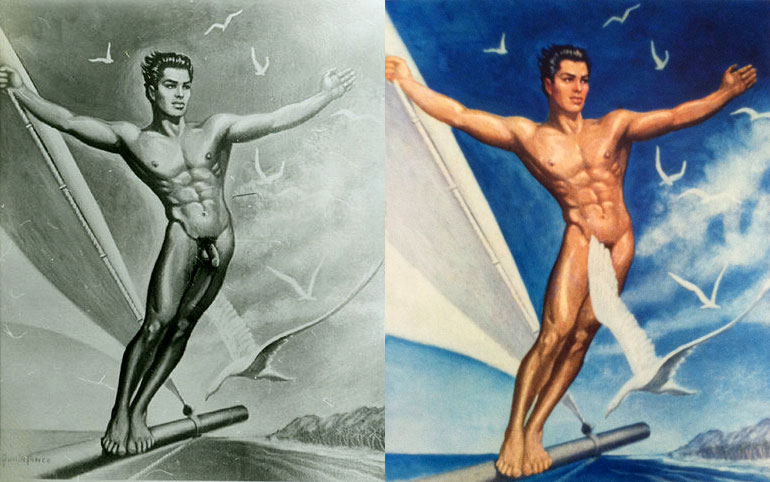 Displaying frontal male nudity was risky in George Quaintance's day. When you consider that many images of unclothed men, even with their penises concealed, often were considered to be obscene, it's no wonder that GQ omitted the penis from his every canvas.
Displaying frontal male nudity was risky in George Quaintance's day. When you consider that many images of unclothed men, even with their penises concealed, often were considered to be obscene, it's no wonder that GQ omitted the penis from his every canvas.
Actually, Quaintance sketched models who were fully nude and studio photographer Victor Garcia photographed models in the nude. Quaintance is even said to have painted while he himself was nude.
As I have reported elsewhere, Quaintance would sometimes include a penis in one of his paintings, only to cover it with paint before he finished.

